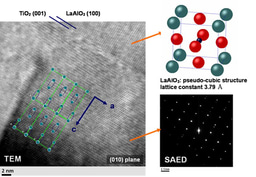The mathematics-related specificity of problem-gambling awareness: Toward the adequacy of warning messages, counselling, and gambling descriptions
Published in Behavioural Sciences & Psychology, Education, and Mathematics

Gambling addiction is special type of addiction not only through the object of the addiction, the psychobiological constitution of the individual, and the pattern of the development of a pathological behaviour and condition, but also through the methods available for preventing and fighting against it and their effectiveness.
This latter specificity has not been clearly established and thus has not been exploited much in problem-gambling research; but specificity should be reflected in warning messages and counselling content.
Prospective research based on the mathematics-related specificity thesis
One of the elements contributing to gambling specificity is the mathematical dimension of games of chance and gambling activity.
Mathematics is strongly connected to gambling through the mathematical models underlying any game of chance. Mathematics is reflected not only in games’ design/characteristics and their outcomes, but also in gamblers’ perception and knowledge of the mathematics-related facts of gambling – which influence their gambling behaviour. As such, the epistemology of gambling mathematics is also qualified to deal with investigation of the cognitive elements of problematic gambling.
Once the mathematics-related specificity is clearly established, it worth investigating how the adequacy of the awareness tools (warning messages, counselling, and product descriptions) depends on it and draw upon a basic conceptual and theoretical framework that allows the design and development of these tools in an interdisciplinary setup involving mathematics and epistemology of gambling mathematics.
A major aim is to the investigate the possibility of mathematically-related compact warning messages with direct transmission (not assuming prior or additional mathematical education for understanding) in respect to their epistemology, structure, content, and language. The rationale and scheme of such messages will be also applicable to the cognitive content of counselling and the other forms of awareness.
A second major aim is to identify all unclear and misleading parts of the language (words, predications, phrases, expressions) in which games and the gambling phenomenon are described. Presently, the language includes both mathematical and non-mathematical terms and is responsible for several misconceptions; as such, this language necessitates norms for an adequate and uniform semantics and use in both research and industry.
In such a theoretical framework, several hypotheses related to effectiveness of the prevention and counselling can be tested further, and the theoretical results can be applied to the development of enhanced awareness materials (general warning messages, math-related elements for counselling schemes, norms for game descriptions, gambling-math courses, modules, and guides for counsellors and gamblers, etc.).
A relevant case study related to the language regimentation is that having as topic how the slots players understand the RTP messages displayed on the machines (Collins et al., 2014). In general, the usage with the adequate meaning and interpretation of the key terms such as odds and probability in the gambling context (Bărboianu, 2025) poses the greatest challenge. Just to mention a single example, the term implied probability used in sports betting is usually subject to conceptual misunderstanding (meant as mathematical probability and not as another expression of the payout odds) (Bărboianu, 2023).
Why the lack of research-based effective tools in the clinical sector?
In general, problem-gambling research has not advanced much in providing effective tools for interventions against problematic behaviour. It has focused on the etiology of the risk factors and prevalence, but findings from these studies have not yet been systematically translated into effective prevention and treatment programs (Abbott et al., 2004; Hayer et al., 2009; Williams et al., 2012; Ariyabuddhiphongs, 2013; Rizeanu, 2015; Matheson et al., 2018; Grande-Gosende et al., 2019). It is true that research in this field had to face many challenges due to its interdisciplinary nature and had to keep up with the accelerated technological evolution of games and gambling. For instance, crypto gambling led to considering non-traditional data for the empirical research, such as crypto transactions based on blockchain technology (Scholten et al., 2020)
The cognitive dimension of awareness imposes theoretical research at the base of the scientific approach (with respect to the object of study, conceptual framework, language, and involvement of several disciplines) and not only in the psychobiological side. It is this former line that we should follow, by focusing on and exploiting the mathematics-related specificity of gambling awareness. In many respects, there is a diffuse border between epistemology (as a philosophical discipline) and cognitive psychology; however, the former has available methods of analysis with universal application.
Since research on treating addictions (including gambling addiction) has run almost exclusively in the psychobiological-medical field, the approach has been generalized in many respects to put all types of addiction under the same umbrella (Karim & Chaudhri, 2012; Rosenberg & Curtiss Feder, 2014; Miller et al., 2019; Rumpf et al., 2019). In particular, the view has been spread that response to warning messages follows the same general pattern across all types of addiction (Rogers et al., 2000; Ginley et al., 2016; Armstrong et al., 2018; Harris et al., 2018), so why would the mathematical message be different with respect to its effects in problem gambling? This thesis has to be challenged.
Harms versus rewards
Classical warning messages are constructed on the central idea of transmitting to the addicted the harms as effects of his or her behaviour despite the rewards and interests in the object of addiction. The kind of reward is one of the visible elements of specificity among addictions, and the gambler’s reward includes a winning/monetary reward which is closely related to the mathematical models of the game and gaming strategies (Bărboianu 2015). In this hypothesis, the relationship between the warning message containing information provided by the mathematical models of a game and gambler’s reward is crucial. Therefore, it is important to investigate the possibility and potential of a mathematical warning message focused on the gambler’s reward and specifically the addiction object (game) rather than on the harms and effects thereof. Its goal is to create a certain (negative) perception/interest/image of the monetary/winning reward (questioning and even annulling the reward) and of the game itself.
On the contrary, a warning message of any kind against smoking will not make the addicted smoker’s rewards questionable – all such rewards (enjoyment, boredom relief, declared improvement in concentration, and so on) are clear and attainable for the addicted smoker (McEwen et al., 2008); they cannot be deconstructed as that gambling reward.
This difference between the two types of addiction argues for the mathematically-related specificity of gambling awareness and its potential in awareness and counselling schemes.
Thus, a mathematical warning message could hypothetically deconstruct the chasing for wins (a gambler’s reward) and the gambler’s reward-related interest in a game, as focused on these elements.
Mathematical education and math-based awareness
It is important to note that the object of this prospective research is not the mathematical education in relation to the gambling behaviour (which is the topic for another project of mine), although they are closely related.
Past studies on the impact of a mathematical didactic intervention with gamblers, testing whether learning about mathematics of gambling does change gambling behaviour, were mainly empirical (Gerstein et al., 1999; Abbott & Volberg, 2000; Hertwig et al., 2004; Steenbergh et al., 2004; Williams & Connolly, 2006; Lambros & Delfabbro, 2007; Pelletier & Ladouceur, 2007; Peard, 2008; Turner et al., 2008; Costello & Fuqua, 2012). Overall, these studies have yielded contradictory, non-conclusive results, and many of them unexpectedly tended to answer no to the hypothesis that gamblers receiving specific mathematical education show a significant change in gambling behaviour after the intervention. Regardless of the criticisms of some of these studies with respect to both their experimental setup and lab-specific methodology (see, for instance, Ladouceur et al., 2013; Keen et al., 2017), the problem of adequacy of awareness in relation to its mathematical dimension – when solved – would in two respects prevail over the relevance of the results of many of the studies cited above: first, if problem gamblers really do not change their behaviour as result of being taught standard mathematics applicable to gambling (basic statistics and probability theory with applications), the adequacy criteria we will find for awareness will eventually tell us what was missed in those interventions; second, in regard to the practical sustainability of such didactic interventions, it is obvious that transmitting effective compact warning messages or delivering counselling sessions with the same cognitive targets as those of interventions is preferable, even if they could be followed by more detailed mathematical interventions – in fact, sending gamblers to attend elaborated math courses, seeing them doing so and understanding what they were taught looks like an illusory goal.
Significance and foreseen outcomes
This prospective research submits to the line that, given the mathematical nature of both the design/characteristics of the games and some elements of the gambling behaviour (such as understanding descriptions and awareness, predicting, and expecting), the research on prevention and treatment of problematic gambling cannot run exclusively in the psycho-medical field, and more complex interdisciplinary collaboration is required.
The object of this research has a mathematical, linguistic, epistemological-cognitive, and educational nature, and as such, lies at the junction of several disciplines. In general, the complexity of scientific communication and education resides in its interdisciplinary nature and in the interaction of its social with its theoretical aspects. This is why this research reverses the usual way of advancement in social sciences and psychology, from empirical to theoretical.
We consider that there is enough evidence that prevention and awareness programs in gambling were ineffective, and before assessing the effectiveness of any new type of program, we must know what is adequate to inform and teach, and how and in what form and language it will be delivered.
The research is intended to open a stream of new studies, mainly empirical, having as their general topic the effectiveness and implementation of enhanced awareness materials and methods (counsellors’ collaboration and acquisition of new competency, gamblers’ impact and response to the new warning messages, primary assessments of gamblers’ behavioural changes, etc.).
As final ready-to-use products of this prospective research we foresee written materials such as compact mathematically-enhanced warning messages, math-related elements for counselling schemes, norms for game descriptions, gambling-math courses, modules and guides for counsellors and gamblers, etc.
References
Abbott, M.W. & Volberg, R.A. (2000). Taking the Pulse on Gambling and Problem Gambling in New Zealand: A Report on Phase One of the 1999 National Prevalence Survey. Department of Internal Affairs, Government of New Zealand.
Abbott, M., Volberg, R., Bellringer, M., & Reith, G. (2004). A review of research on aspects of problem gambling. London: Responsibility in Gambling Trust.
Armstrong, T., Donaldson, P., Langham, E., Rockloff, M., & Browne, M. (2018). Exploring the effectiveness of an intelligent messages framework for developing warning messages to reduce gambling intensity. Journal of Gambling Issues, 38.
Ariyabuddhiphongs, V. (2013). Problem gambling prevention: Before, during, and after measures. International Journal of Mental Health and Addiction, 11(5), 568-582.
Bărboianu, C. (2015). Mathematical models of games of chance: Epistemological taxonomy and potential in problem-gambling research. UNLV Gaming Research & Review Journal, 19(1), 2. Summary
Bărboianu, C. (2023). Implied probability in sports betting: Calculation and Interpretation. Nostrabet. Retrieved from Nostrabet.com.
Bărboianu, C. (2025). Key statistical terms in gambling - definitions and adequate interpretations. Nodepositbonus. Retrieved from Nodepositbonus.cc.
Collins, D., Green, S., d’Ardenne, J., & Wardle, H. (2014, October). Understanding of Return to Player messages. In conference Harm Minimisation: Investigating Gaming Machines in Licensed Betting Offices, London (Vol. 10). Summary
Costello, M. S., & Fuqua, R. W. (2012). A Brief Behavioral Intervention of Harm Reduction for Online Poker Players. Analysis of Gambling Behavior, 6(2).
Gerstein, D., Volberg, R.A., Murphy, S., Toce, M., et al. (1999). Gambling impact and behavior study. Report to the National Gambling Impact Study Commission. Chicago: National Opinion Research Center at the University of Chicago.
Ginley, M. K., Whelan, J. P., Keating, H. A., & Meyers, A. W. (2016). Gambling warning messages: The impact of winning and losing on message reception across a gambling session. Psychology of Addictive Behaviors, 30(8), 931.
Grande-Gosende, A., López-Núñez, C., García-Fernández, G., Derevensky, J., & Fernández-Hermida, J. R. (2019). Systematic review of preventive programs for reducing problem gambling behaviors among young adults. Journal of gambling studies, 1-22.
Hayer, T., Mayer, G., & Griffiths, M. D. (2009). Problem gaming in Europe: Challenges, prevention, and interventions. New York: Springer.
Harris, A., Parke, A., & Griffiths, M. D. (2018). The case for using personally relevant and emotionally stimulating gambling messages as a gambling harm-minimisation strategy. International Journal of Mental Health and Addiction, 16(2), 266-275.
Hertwig, R., Barron, G., Weber, E.U., Erev, I. (2004). Decisions from experience and the effect of rare events in risky choice. Psychological Science, 15(8), 534-539.
Karim, R., & Chaudhri, P. (2012). Behavioral addictions: An overview. Journal of Psychoactive Drugs, 44(1), 5-17.
Keen, B., Blaszczynski, A., & Anjoul, F. (2017). Systematic review of empirically evaluated school-based gambling education programs. Journal of gambling studies, 33(1), 301-325.
Ladouceur, R., Goulet, A., & Vitaro, F. (2013). Prevention programmes for youth gambling: a review of the empirical evidence. International Gambling Studies, 13(2), 141–159. doi:10.1080/14459795.2012.740496.
Lambros, C. & Delfabbro, P. (2007). Numerical Reasoning Ability and Irrational Beliefs in Problem Gambling. International Gambling Studies, 7(2), 157-171. doi: 10.1080/14459790701387428.
Matheson, F. I., Sztainert, T., Lakman, Y., Steele, S. J., Ziegler, C. P., & Ferentzy, P. (2018). Prevention and treatment of problem gambling among older adults: a scoping review. Journal of Gambling Issues, (39).
McEwen, A., West, R., & McRobbie, H. (2008). Motives for smoking and their correlates in clients attending Stop Smoking treatment services. Nicotine & Tobacco Research, 10(5), 843-850. Summary
Miller, W. R., Forcehimes, A. A., & Zweben, A. (2019). Treating addiction: A guide for professionals. New York: Guilford Publications.
Peard, R. (2008). Teaching the Mathematics of Gambling to Reinforce Responsible Attitudes towards Gambling. Retrieved from http://www.stat.auckland.ac.nz/~iase/publications/icme11/ICME11_TSG13_15P_peard.pdf
Pelletier, M., Ladouceur, R. (2007). The effect of knowledge of mathematics on gambling behaviours and erroneous perceptions. International Journal of Psychology, 42(2).
Rizeanu, S. (2015). Pathological gambling treatment-review. Procedia-Social and Behavioral Sciences, Vol. 187, 613-618.
Rogers, W. A., Lamson, N., & Rousseau, G. K. (2000). Warning research: An integrative perspective. Human Factors, 42(1), 102–139.
Rosenberg, K. P., & Laura Curtiss Feder, P. (Eds.). (2014). Behavioral addictions: Criteria, evidence, and treatment. Elsevier, Academic Press.
Rumpf, H. J., Brandt, D., Demetrovics, Z., Billieux, J., Carragher, N., Brand, M., ... & Borges, G. (2019). Epidemiological challenges in the study of behavioral addictions: A call for high standard methodologies. Current Addiction Reports, 6(3), 331-337.
Scholten, O.J., Zendle, D., Walker, J.A. (2020). Inside the decentralised casino: A longitudinal study of actual cryptocurrency gambling transactions. Plos One, 15(10): e0240693. Summary NO
Steenbergh, T.A., Whelan, J.P, Meyers, A.W., May, R.K., & Floyd, K. (2004). Impact of warning and brief intervention messages on knowledge of gambling risk, irrational beliefs and behavior. International Gambling Studies, 4(1), 3-16.
Turner, N. E., Macdonald, J., Somerset, M. (2008). Life Skills, Mathematical Reasoning and Critical Thinking: A Curriculum for the Prevention of Problem Gambling. Journal of Gambling Studies, 24(3), 367-380.
Williams, R.J., Connolly, D. (2006). Does learning about the mathematics of gambling change gambling behavior? Psychology of Addictive Behaviors, 20(1), 62-68.
Williams, R. J., West, B. L., & Simpson, R. I. (2012). Prevention of problem gambling: A comprehensive review of the evidence and identified best practices. Ontario Problem Gambling Research Centre and the Ontario Ministry of Health and Long Term Care.
Problem gambling and gambling mathematics. https://probability.infarom.ro/pg.html
Mathematics-related specificity of problem-gambling awareness: Toward the adequacy of warning messages, counseling, and game descriptions. PhilScience Gambling Lab https://www.philscience.org/pages/pgmathspec.html
A PhilScience educational project. Contact us at info[at]philscience.org to get involved or contribute.
Image credit: untamedscience.com





Please sign in or register for FREE
If you are a registered user on Research Communities by Springer Nature, please sign in